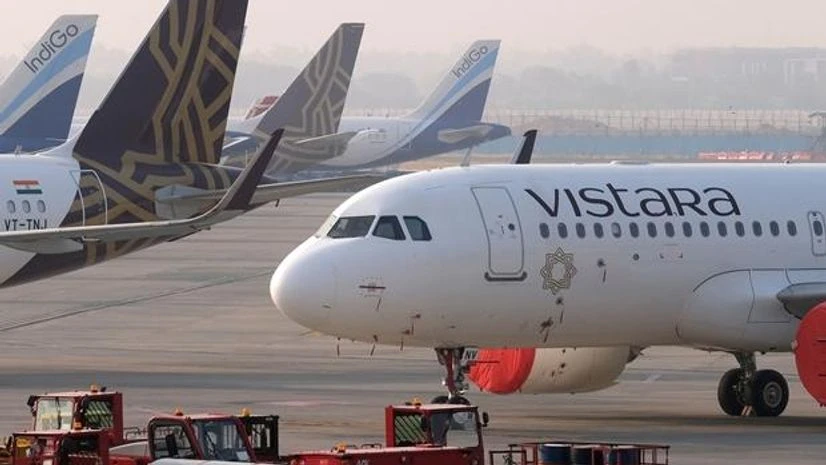As the Tata Group looks to merge its full-service carriers, Air India and Vistara and low-cost carriers, Air India Express and Air Asia, the airline will have a more integrated operations structure allowing it to operate more efficiently.
Talking about the rearrangement of operations, an Air India official said we have two concurrent integrations. One between two low-cost airlines, Air India Express and AirAsia India, and the other between the two full-service airlines, Air India and Vistara. The official said the group will integrate to make one full-service and one low-cost airline group.
In this story, we delve deeper to understand the differences between full-service and low-cost carriers.
Full-service carrier (FSC) and a Low-cost carrier (LCC): What is the difference?
As the name suggests, tickets from low-cost carriers are priced lower but also come with limited legroom and are bereft of any on-flight goodies like free-of-cost snacks, drinks, and food. On some low-cost airlines, a cup of water is all the passengers are served.
Also Read
On the other hand, full-service airlines serve their customers with in-flight services like free-of-cost pillows, blankets, snacks, and drinks.
While these differences are pretty obvious, there are more subtle ones you may not be aware of.
Different strategies for making money
While full-service airlines tend to focus on network profitability, low-cost carriers concentrate on route profitability. In other words, while the low-cost carriers prefer not to serve a route if they do not have enough passengers, full-service airlines will let a marginal route survive if it feeds passenger traffic through a hub and onto a highly profitable route that helps cover the less profitable routes.
This is why routes with low-cost airlines have a shorter life and are eliminated or added in accordance with their own performance. Instead of focusing on hubs and connectivity, low-cost airlines are more concerned about individual route profitability.
This phenomenon also allows low-cost carriers to experiment more with new routes, which is not true with full-service airlines.
The difference in the composition of their fleet
Low-cost carriers usually operate the same kind of aircraft. For example, low-cost carrier Southwest Airlines operates more than 730 plans, all being Boeing 737 variants. Frontier Airlines, another low-cost carrier, has about 110 planes, all belonging to the same Airbus A320 family. These numbers were published in a simpleflying report.
While low-cost carriers have a great deal of uniformity in their fleet, full-service airlines operate a variety of aircraft. For example, the full-service British Airways has at least nine types of aircraft in its fleet. Another full-service airline, United Airlines, operates seven different plane types.
Why do full-service airlines and low-cost carriers have a different fleet composition?
Running just one type of aircraft is cheaper as the maintenance facilities required will be the same for all of these planes. Moreover, the employees also have to be trained to work with just one type of plane. It helps low-cost carriers to standardise things across the organisation. These steps go a long way in keeping the cost and, therefore, the fares down.
However, having just one type of plane in their fleet limits the ability of low-cost carriers to deal with different routes. On the other hand, full-service airlines have different types of aircraft to suit the need of the hour, allowing them to field the most suitable plane according to the route.
This results in full-service airlines offering services to more destinations and choices. However, this makes things costlier for both passengers and the airline.
Differences in revenue sources
Low-cost airlines rely heavily on ancillary revenue to make profits. Fares on low-cost airlines are sometimes so cheap that they earn very little to no money for the airline. This is why these airlines explore options to make money from ancillary sources, including the revenue from checked-in bags, on-flight snacks, and upfront seats sold.
On the other hand, full-service airlines charge a flat ticket price, and everything is included therein.

)
